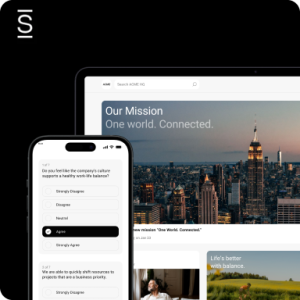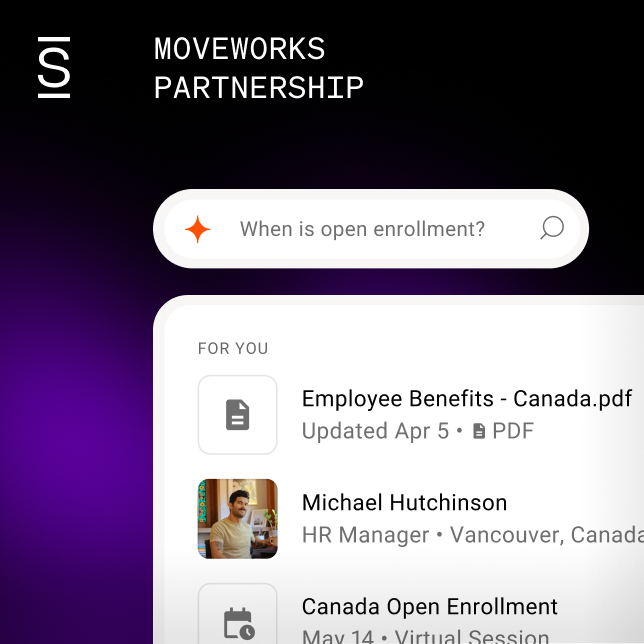Did you know we drink 517 million cups of coffee every day in the U.S.? Those 3.1 cups per person add up to one whopper of an industry. And it’s no surprise who’s at the top of the coffee game: Starbucks. But there’s an alternate timeline out there with no pumpkin spice lattes. One where CEO Howard Schultz didn’t return to the helm in 2008 to turn the company around in the wake of store closings, widespread layoffs, and a significant drop in share price. How did he do it? By refocusing on organizational culture.
In a headline-making move, he shut down every Starbucks location for three and a half hours to reorient staff, stating that with its immense growth, Starbucks had “forgotten what we stood for.”
From that moment forward Starbucks started its comeback, sweeping changes helped the coffee titan rediscover its roots. Looking back later in a Harvard Business Review interview, Schultz remembered owning mistakes Starbucks made and said, “The challenge was how to preserve and enhance the only assets we have as a company: our values, our culture and communication guiding principles, and the reservoir of trust with our people.”
Today, Starbucks is back on top of the coffeehouse industry, Starbucks restaurant count is up to 33,000 locations across 76 countries.
Organizational culture is “how we do things”
Clearly, a strong organizational culture is critical to organizational health. But one of the biggest problems in studying organizational behavior and culture change is that corporate culture is so hard to define.
You can list elements like core values and expectations, describe the mechanics of how culture is conveyed, and even graph bell curves of response times and other measurable behaviors. But none of that would tell you what it really means to a corporation — or to its employees.
A recent Harvard Business Review article on organizational culture, reported a myriad of definitions from all over the internet. Author and Professor Michael D Watkins of IMD called company culture “the organization’s immune system,” while American inventor Alan Adler said that culture was “civilization in the workplace.” A Zambian project management expert, Robbie Katanga, may have said it the most simply when he was quoted as saying that organizational culture is “how organizations do things.”
So, what is organizational culture? It encompasses all of these and more — the shared values, behaviors, interactions, and attitudes of an organization. It’s the way people do things, and it’s the way they treat each other.
But the most interesting definition might just be Watkins’. If the Starbucks case study proves anything, it’s that organizational culture is a unique path to recovery and wellness that only your company can develop and use.
How organizational culture affects employees
According to Lexington Law, 68% of Americans value benefits and company culture over salary. That’s pretty eye-opening, when you consider most of us go to a job every day for the money. But that’s exactly why you need to look at the importance of organizational culture in strategic management. After all, if we were all really “in it for the money” only, would we willingly choose jobs that perhaps put our own safety at risk, like law enforcement or medicine? Would we go to school for years to learn skills just for the money? Of course not. Obviously, we care about what we do, we take pride in our work, and we want to work in a supportive environment.
Companies, of course, tend to focus on what a strong culture can do for the organization as a whole, defining types of organizational culture based on business results. An adhocracy culture, for example, focuses on individual flexibility and initiatives to keep an organization agile so it can respond quickly to changing market conditions. A clan culture focuses on building a shared commitment to company values for a consistent customer experience.
But that barely scratches the surface of why culture matters to employees.
According to a study published in MIT Sloan Management Review, workplace culture is ten times more important than compensation when predicting turnover—a toxic culture makes people leave. On the other hand, Gallup reports that a healthy culture can drive employee engagement, resulting in “better customer engagement, higher productivity, better retention, fewer accidents, and 21% higher profitability.”
In other words, culture affects companies at the organizational level because of how it makes employees behave at the individual level. To create widespread organizational change, you have to focus on the individual employee experience, improving your work environment by finding ways to increase employee satisfaction and motivation.
Get laser-focused on employee experience
Organizational transformation starts by identifying the key areas that affect employee experience day to day. The list below isn’t exhaustive, but it’s a good place to start as you think about your current company culture and what might need to change to improve employee motivation and commitment.
1. Do as I do, and as I say: leading by example
Organizational culture and leadership are inseparable. If you want employees to trust and respect each other, those company values have to start at the top. Company leaders need to embody the values they want to see in their teams.
In fact, that’s one of the primary reasons that subcultures are so prevalent within large organizations. A single manager who encourages distributed decision-making and creates safe boundaries for risk-taking can have phenomenal results even in a company with a relatively stagnant culture. Unfortunately, a https://fairygodboss.com/articles/signs-of-toxic-boss can have a similarly negative effect in the midst of an otherwise healthy corporate culture.
Effective cultural change requires buy-in from stakeholders at every level.
2. Offer sincere praise and encouragement
When recognition and personal attribution are among your organization’s cultural values, employees understand that their contributions are important to the team effort and to the company’s bottom line. They feel proud of their work, for good reason, and they feel motivated to bring their A-game every day.
3. Build strong teamwork through mutual respect
A group of people working as individuals is far less effective than those who collaborate. By focusing on each person’s individual strengths and skills, teams learn to respect and rely on each other while valuing their own talents. Those positive social interactions also fulfill our social needs as human beings, increasing both personal satisfaction and a shared sense of purpose.
4. Reinforce a sense of shared values and expectations
How many of your employees know the corporate mission statement? Even if it’s painted on the wall so everyone can see it, can employees state specific examples of how the company leadership embodies it? Shared values can start with a mission statement, but they need to go much further than that. Misaligned values can quickly lead to discordant efforts, chipping away at the foundation of trust and confidence that’s essential for success. Employees will most certainly notice when the way an organization behaves is a mismatch with what it says it believes. When there’s alignment with the values of leaders, teams, and individuals, the intention behind your mission statement translates into action that employees can see — and live — every day.
5. Go beyond health initiatives to improve well-being
Research at McKinsey suggests that many corporate efforts to address employee burnout and improve health and well-being aren’t focused on points that can make a difference. While we applaud HR teams for caring about employee well-being, addressing the symptoms of burnout only reaches the problem after the fact. Instead, look to the root causes of toxic workplace behavior. Many employees today look for ongoing support with available mental healthcare on-site, wellness programs like yoga classes, standing desks, diet and exercise programs, gym memberships, and non-mandatory social events. Having a place to unwind, relieve stress, get some physical exercise, and socialize goes a long way toward combating burnout—and shows that companies are actively involved with wellness.
6. Bring everyone together using effective communication
You might raise new initiatives and intentions in a quarterly all-hands meeting or an annual leadership retreat, but how do you make sure you carry those messages into action throughout an organization? New product rollouts come with milestones and metrics, but it’s harder to define what it means to change a culture. i How do you keep people motivated at every level of the organization, and how do you know it’s working?
The Simpplr intranet platform was built to keep employees connected with corporate culture. To learn more, read the CIOReview interview with Dhiraj Sharma, Simpplr’s CEO, as he talks aboutIntranet Reinvented for Modern Organizational Culture and Communication.
Break it down to build it back up
In military boot camp, the philosophy is to break down the old to allow the new to blossom. Apply the same principles to cultural transformation: you need to look at each component to rebuild something new and better. Here’s how to do it (no push-ups required).
1. Break it down: Analyze and set goals
Where’s your organization right now, culturally-speaking? Consider surveying your employees about their understanding of the company culture, and get their opinions on what’s working, and what could use a refresh. With that information in hand, you can define the changes you want to see, the values and behaviors that will lead to those changes, and the goals you want to meet along the way.
A great way to survey employees easily is through the company’s intranet. Simpplr’s intranet platform comes with built-in analytics as well as employee surveys that make gathering information a lot easier across any organization, no matter how large.
2. Are your first-impressions reflective of the culture?
How is your onboarding process? Does it match the values of your culture? Do you, for example, say you’re a “people-first” organization, but immediately put new hires in a room alone with a Powerpoint presentation as a means of orientation? By starting your transformative initiatives at the beginning of an employee’s lifecycle, you can add new people to your organization who are already aligned with your vision. Also, consider mentoring new employees with team members who exemplify the qualities you want to keep your effort moving forward.
An empowered employee onboarding process can improve employee retention by 82% and increase productivity by over 70%.
3. Keep it simple: go for low-hanging fruit
The first things to change should be the practices, rules, and traditions that have clearly outlived their usefulness. Chances are pretty good you already know what they are. They might look like old, outdated time-keeping rules. They might mean mandatory in-office hours without regard for personal circumstances. Perhaps it’s something as simple as a dress code. Those kinds of traditions are simple to change, but they go a long way—and they set the tone for the positive changes to come..
For example, virtual engagement activities can help foster a creative and innovative company culture.
4. Elevate enthusiastic voices
To transform workplace culture, you need more than a select group of people. A culture needs everyone’s participation and buy-in. The good news? Some employees will be enthusiastic about the shift from day one. Elevate their voices throughout the company so others can get onboard with the movement. Simpplr’s built-in newsletter capabilities can help you elevate positive voices and effect change throughout your organization.
Simpplr’s intranet platform is perfect for implementing and supporting company culture initiatives whether you’re transforming your culture across an enterprise organization, working to maintain it across an increasingly remote workforce, or communicating it to an influx of new employees during mergers or rapid expansion.
To learn more, seehow Envestnet leveraged Simpplr to retain a unified company cultureafter having grown to over 4,600 employees across 11 global locations.




















